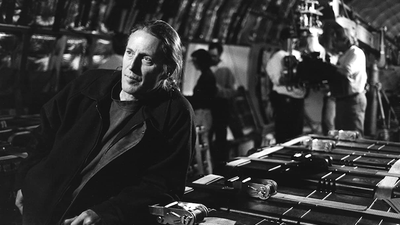[ad_1]
Wooden all the time most well-liked kinetic vitality to prettiness, and carried this philosophy to extremes if the director inspired it. Along with serving as a DP on low- and mid-budget initiatives within the ’70s and early ’80s, Wooden was a cameraman on William Friedkin’s 1985 cops-on-the-edge thriller “To Reside and Die in L.A,” working for cinematographer Robby Muller. It was a down-and-dirty manufacturing that hardly ever did greater than 4 takes of any given shot, and that generally rolled on rehearsals with out telling the actors. As a DP, Wooden appeared to take pleasure in staging motion that compelled the digicam to get into the center of issues alongside the actors and stunt performers. The skydiving sequences in “Terminal Velocity” are the primary (maybe solely) cause to see it. The digicam rigs hooked up to parachuting actors, stuntpeople and digicam operators can be employed in related motion scenes in different folks’s initiatives, and for years afterward, you’d see “Terminal” skydiving footage being licensed for re-use in TV reveals that could not afford to shoot their very own skydiving scenes. Most of the motion scenes in “Ben-Hur,” together with the chariot racing, include pictures taken with tiny GoPro cameras. They’ve the shuddering, flickery feeling of skateboarding or dash-cam movies.
Wooden’s first job as cinematographer was 1969’s “The Honeymoon Killers,” a venture originated by the younger Martin Scorsese. In response to Wooden, Scorsese was fired after every week as a result of he was shooting “extensive grasp pictures, too slowly, meticulously and expensively for the producers” and was changed by the movie’s author, Leonard Kastle. To guard himself, Kastle, and the story, and get by way of the manufacturing quick, Wooden tried to “minimize the movie in-camera” on the set—i.e., shoot solely the items that had been wanted to edit collectively scenes in the best way that the filmmakers had determined prematurely that they wished, and keep away from taking pictures alternate angles and extra takes that producers may use as “choices” to re-cut the film their very own means. Wooden advised journalist Robert Cashill in 1997 that when he watched “The Honeymoon Killers” once more, many years after engaged on it, “I can see the cinematography crystallizing until it will get to some extent the place I say, ‘Ah, that is me–that’s my fashion rising.’”
Wooden rose to the highest of his commerce in 1986 when Michael Mann, the chief producer of “Miami Vice,” employed him to be the supervising cinematographer on seasons three by way of 5. “Vice” was shot throughout South Florida, primarily in present areas that had been chosen for his or her robust architectural personalities, however the world wasn’t alleged to look “actual”—extra like hyperreal or expressionistic. Mann wished a neo-noir look that made the town’s lurid colours appear to shimmer. Wooden delivered, framing and lighting Miami neighborhoods, business storefronts, and authorities buildings so that every appeared as if it might be both an artwork set up or a set from one of many Sixties neo-noirs that made Wooden wish to get into movie-making as an adolescent again in England. (He began out as an assistant to John Boorman, who directed the traditional “Level Clean,” and viewers continued to see Boorman’s affect on Wooden’s framing and lighting.)
[ad_2]
Source link


